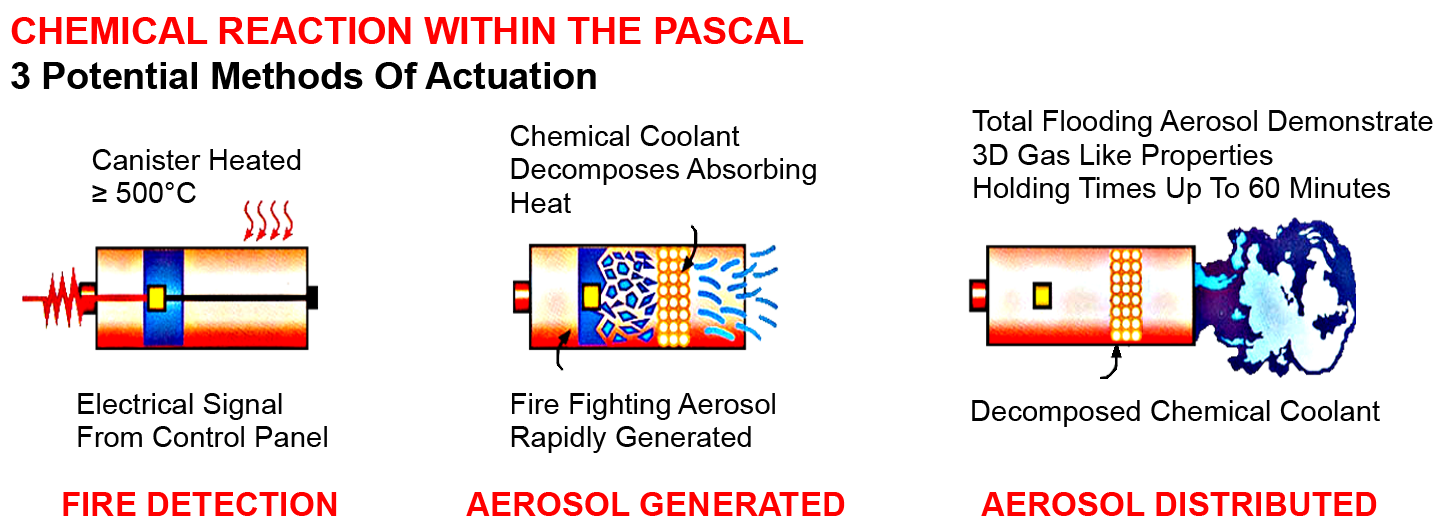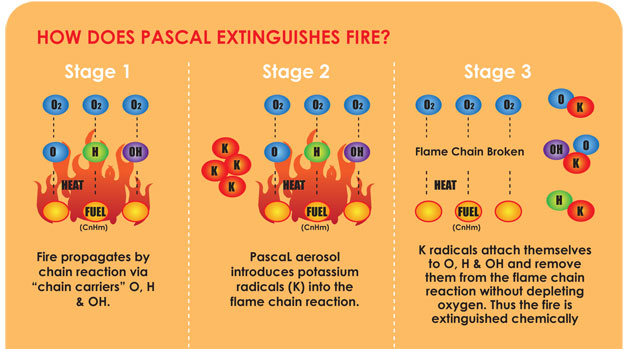|
|
HOW PASCAL WORKS ?
| Operation of the PASCAL generator is either electrical automatic, electrical manual or thermal automatic.
The electric activation device functions upon receipt of an electrical signal, while the thermal activation device functions upon a direct contact with flame or when temperature reaches a rated value, to ignite a special booster charge, which in turn, ignites the aerosol-forming compound to produce PASCAL aerosol. The aerosol propels itself through the cooling element and out of the delivery nozzle into the protected area.
The principle of extinguishing action employed by PASCAL is unique - a special solid chemical, PASCAL aerosol-forming compound, when electrically or thermally activated, undergoes a combustion reaction to produce micron sized dry chemical particles and gases. Dry chemical particles - mainly potassium carbonates, and gases - mainly carbon dioxide, nitrogen and water vapour, mix together into a uniform aerosol, which represents an actual extinguishing medium. Before being released into a protected area, the aerosol propels itself through PASCAL cooling element, which absorbs heat, thus ensuring a low temperature discharge and uniform distribution of the aerosol within the area.
The high rate of aerosol discharge ensures tremendous knockdown effect. Micron-sized aerosol particles exhibit gas-like three dimensional qualities that allow the agent to rapidly distribute throughout the enclosure and reach even the most concealed and shielded locations. Homogeneous distribution is achieved in a matter of seconds, while long holding times help to prevent fire re-ignition.
|
| |
 |
|
|
PASCAL has the lowest extinguishing concentration known among commercially available agents - flammable liquids (class B fires) are extinguished at the Design application density of 100 g/m3 compared to 330 g/m3 for Halon 1301.
|
 |
| |
PASCAL PROTECTS IN TWO WAYS:
TOTAL FLOODING SYSTEM OR DIRECT-TO-SOURCE SYSTEM
|
|
|
Total Flooding Applications: May be used where the hazard is within an enclosure that will permit the establishment of the required concentration and the maintenance of that concentration for the required period. This type of application is suitable especially when the source of hazard is unknown or to protect the whole enclosure area itself.
Direct To Source Applications: May be used when the source of hazard can be identified or to protect certain area or equipment. This type of application requires higher concentration than Total Flooding Application.
|
|
|